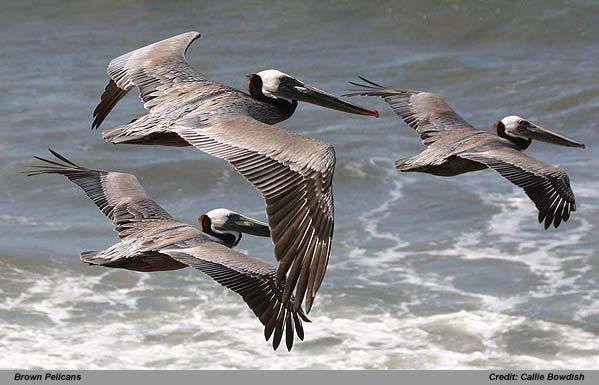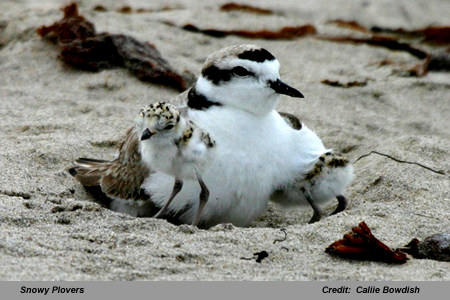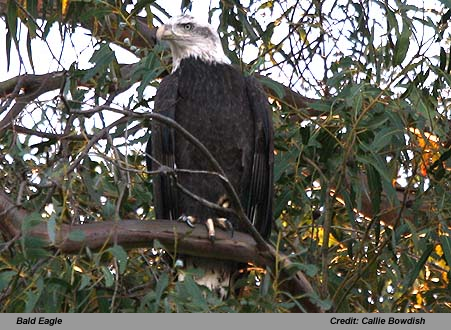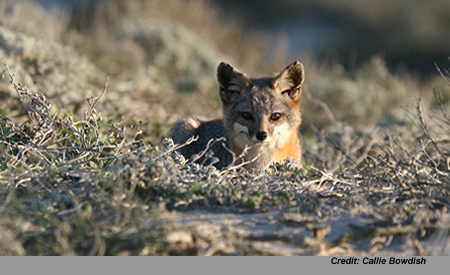|
When the numbers of a particular kind of plant or animal become so low that they are at risk of becoming extinct we say they are an endangered species. Sometimes a species can be endangered because the habitat that provides its home is being destroyed. The processes and biology contributing to endangered species are universal.

An endangered species is one that is in danger of extinction throughout all or part of its geographic range. A threatened species is one that is likely to become endangered in the foreseeable future. The number of threatened species is increasing. There are currently over 16,000 species worldwide designated as threatened species by the
International Union for Conservation of Nature (IUCN). Understanding and passion to protect species worldwide is the key to global conservation success.
United States
Check on the status (endangered or threatened) of species in the United States at the U.S. Fish and Wildlife Service Endangered Species Program website.
Worldwide
Check on the status of species worldwide on the IUCN Red List of Threatened Species.
ENDANGERED SPECIES

The California Condor, North America's largest soaring bird, is an
endangered species in the Santa Barbara area.
California Condor/National Park Service
Catch a Glimpse of the California Condor/Plugged-in/Santa Barbara Educators' Roundtable
THREATENED SPECIES
A threatened species in the Santa Barbara area is:
Western Snowy Plover (Pacific Coast Population)

These small shorebirds have lived on California beaches for thousands of years. They are threatened due to disturbance of their nesting sites, predation and habitat loss.
CONSERVATION SUCCESS STORIES:
Bald Eagle, Santa Cruz Island Fox
Bald Eagle

Prior to 2006 the last known successful hatching of a bald eagle chick on the Northern Channel Islands off Santa Barbara was in 1949. Restoration efforts began in 2002 when a very small group of bald eagles began to be reintroduced to Santa Cruz Island from their nursery in the San Francisco Zoo. In 2006, another milestone was accomplished as the first chick hatched on the island, unaided by humans.
Webcam/Video clips of Bald Eagle chicks hatched on Santa Cruz Island/The Nature Conservancy
The Bald Eagle was at the brink of extinction nationwide in the early 1960's due to a combination of factors, among them loss of habitat, hunting, and accumulation of pesticide in fish, a staple of the Bald Eagle's diet. In 1967 the
U. S. Fish and Wildlife Service listed the Bald Eagle as an endangered species. This designation provided greater protection for the birds' habitat as well as protection of the birds from harmful human activities. By the 1990's the Bald Eagle population was making a comeback and the designation was changed from Endangered to Threatened.
By 2006 the National Audubon Society's data confirmed increases in population in every state. Conservation and strong protection efforts brought the Bald Eagle back from the brink of extinction (National Public Radio).
eNature's Bald Eagles
Santa Cruz Island Fox
Endangered Island Fox Population Rebounds/Ventura County Reporter
Channel Island Fox Clears Major Hurtle/Santa Barbara Independent

Brown Pelican

The brown pelican population was devastated by the effects of decades of widespread use of the pesticide DDT. DDT entered into the food chain and pelicans died because the fish that they eat were poisoned by DDT. The brown pelican has made a remarkable comeback in the years since DDT use was banned in the United States, and the population size is now healthy enough to sustain itself. The brown pelican may be removed from the endangered species list, although loss of its habitat, oil spills, and entanglement in fishing gear and are still a concern.
Additional Resources
U.S. Fish and Wildlife Endangered Species Program
Endangered Species and Conservation Biology
Glossary of terms on endangered species and conservation biology
|

